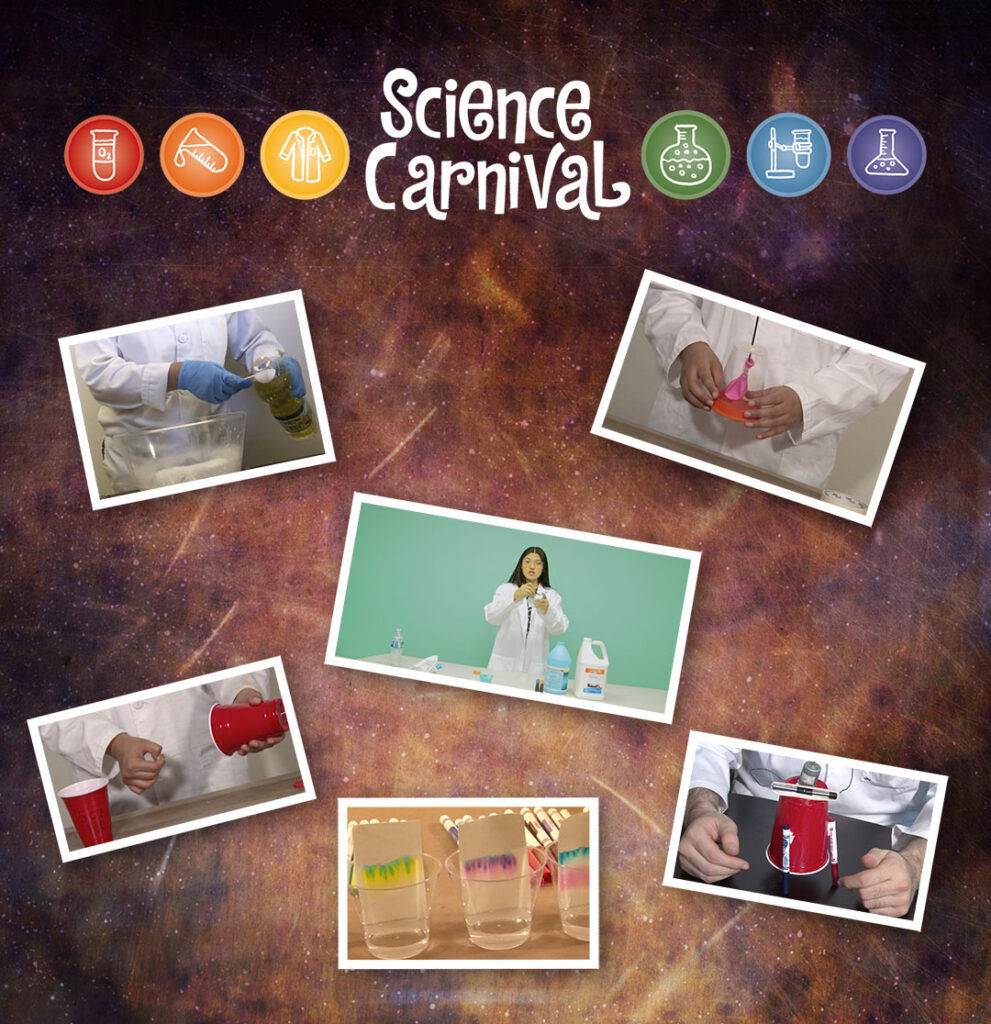 CAMARILLO — Chemistry major Sahira Lorenzo Aguilar is very excited about the soap monster activity.
CAMARILLO — Chemistry major Sahira Lorenzo Aguilar is very excited about the soap monster activity.
“We put Ivory soap in a microwave and it expands,” said Aguilar, who helped coordinate the Virtual Science Carnival, “It vibrates and looks like a little cloud. That’s the kind of magic we want students to see.”
The magic of CSU Channel Islands’ (CSUCI) annual Science Carnival will be virtual this year, which will allow teachers, parents and kids from pre-school age on up to the eighth grade to bring hands-on science activities into their own homes and classrooms.
“With the Virtual Science Carnival, kids can immerse themselves in over 50 activities where they are touching, seeing and doing science,” said Science Carnival founder and Professor of Chemistry Phil Hampton, Ph.D.
Beginning on April 5, how-to videos of the science activities, along with interviews with science, technology, engineering and math (STEM) professionals will be available at: www.sciencecarnival2021.com.
“It’s Disneyland for science,” said Associate Director of STEM Educational Outreach Sandy Birmingham. “It’s usually an in-person event that showcases over 100 hands-on science activities all organized by science themes that we call zones. I’m hoping we have the same engagement and impact through the virtual event.”
All of the hands-on science activities will launch on April 5 with a different project highlighted each day. The projects will be available online through April 30. Although the Science Carnival isn’t in-person, there is the potential to draw kids and families from virtually anywhere as the event is free and fully online.
Kids will be able to make their own Flubber and Oobleck — two out-of-this-world substances somewhere between liquids and solids and bound to inspire giggles and “wow”s.
Young aspiring scientists will also make rock candy, do a lava lamp experiment, compare bird beaks, see how a lung works, and create a tie-dye experiment, to name just a few activities.
Among the approximately 50 videos created by CSUCI STEM students, 20 were created by Project PROMESAS students at CSUCI. These videos are provided in both Spanish and English so that families who speak primarily Spanish can join the fun. Additionally, 25 videos were created by students in CSUCI Chemistry Lecturer Dr. Safa Khan’s classes.
“We developed step-by-step activity guides so teachers and parents or guardians can join in the activities at home,” Birmingham said. “Some activities include an Amazon shopping list that parents, guardians or educators can access.”
Numerous Science Carnival partners also contributed videos including the Santa Barbara Museum of Natural History; KidSTREAM children’s museum; Channel Islands National Park; STEMs Grow; Ventura Watershed Protection District; Naval Surface Warfare Center; and the U.S. Naval Academy in Annapolis, Maryland, to name just a few.
Diversity is key when it comes to the STEM professionals who will be speaking about their field and how they launched their careers. Hampton said the STEM interviews include women and people of color, often not well-represented in STEM fields.
“We have diverse role models, and our campus is a Hispanic-Serving Institution with over 55% of our students being Latinx,” Hampton said. “These professionals are running some of these activities and the kids who participate in this event not only get exposed to science but also get to see people who look like them doing science.”
Aguilar is an example of a student who entered the field of Chemistry at CSUCI because of a visit to the Science Carnival when she was in high school.
“That was the first time I saw I had the potential to really be a scientist,” Aguilar said. “It all became concrete at the carnival. People were wearing lab coats and the terms that made no sense to me at first suddenly made sense. I thought science was not for people of color or just for people who only spoke English, but then I thought — I can bring myself and my culture into this.”
The Science Carnival has been held since 2008 but had to be postponed last year because of the pandemic. This year’s Science Carnival is being funded in part by a grant from the U.S. Department of Education, Title III, HSI STEM Grant, an Instructionally-Related Activities grant from CSUCI, and a donation from Careers in Energy/Californians for Energy Independence.
Funding for future Science Carnivals is uncertain, so Hampton is asking any interested organizations to help support future Science Carnivals, which usually draw more than 2,000 attendees. Those interested can email Sandra.birmingham@csuci.edu
About California State University Channel Islands — CSU Channel Islands (CSUCI) is reimagining higher education for a new generation and era. We are an innovative higher education institution that enables students to succeed and thrive – serving as an engine for social and economic vitality that provides the intellectual resources necessary for a thriving democracy. With more than 7,000 students, 1,200 employees and 14,000 alumni, CSUCI is poised to grow in size and distinction, while maintaining one of the most student-focused learning environments in public higher education. Connect with and learn more by visiting www.csuci.edu or CSUCI’s Social Media.
